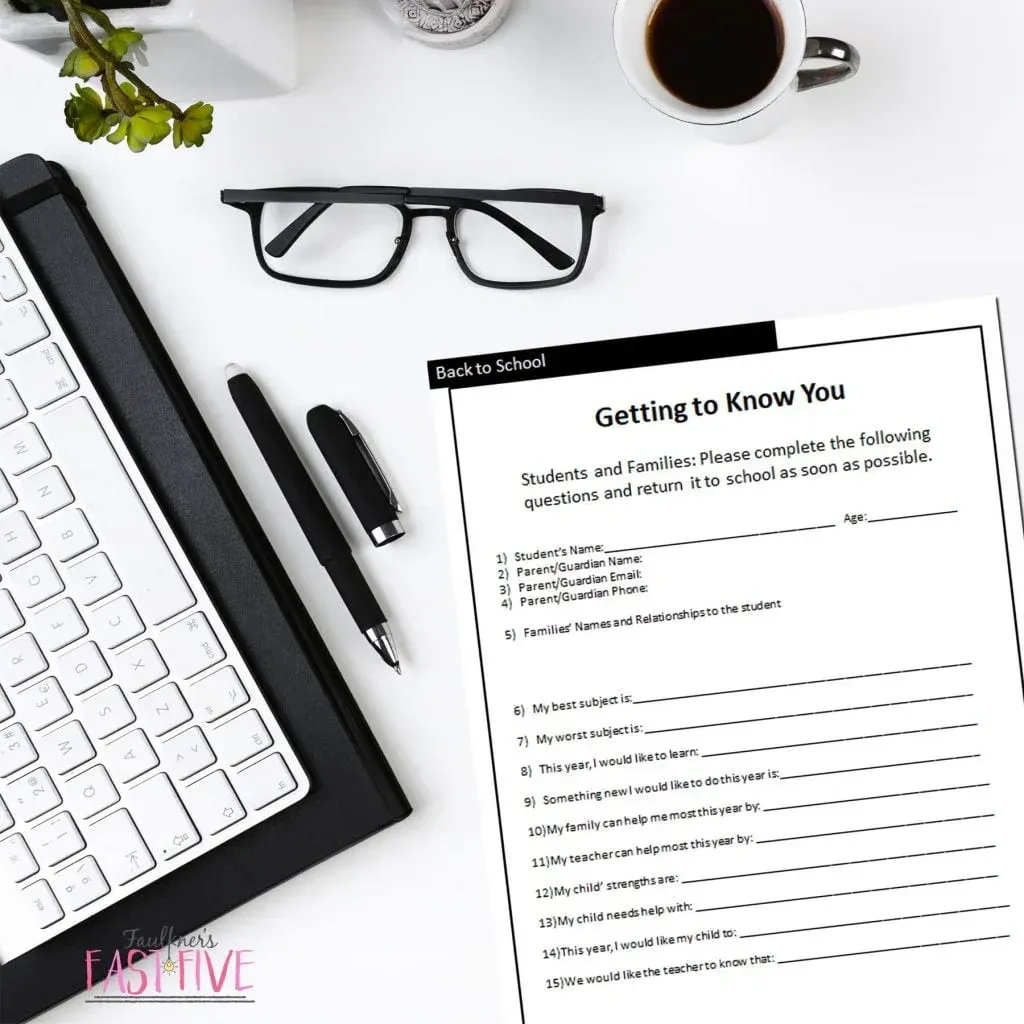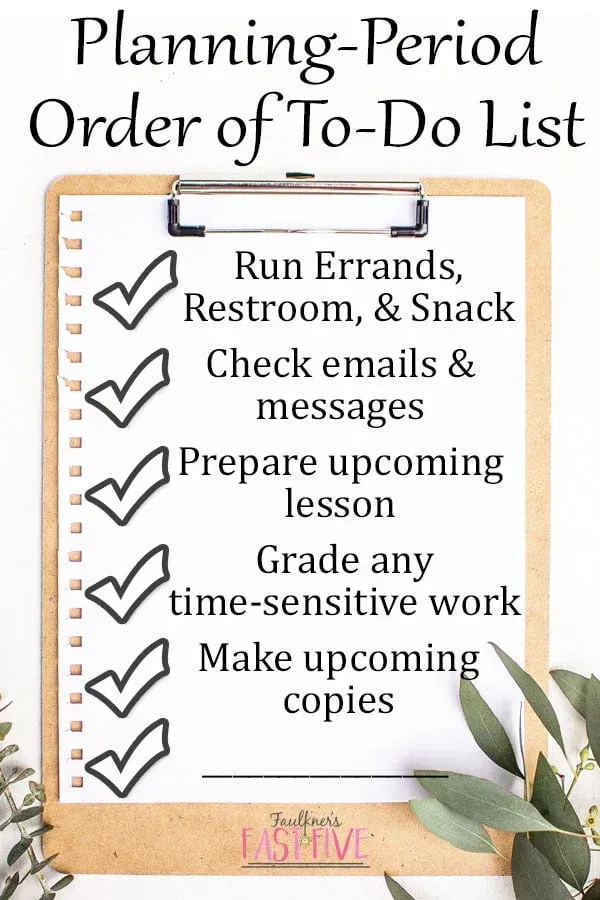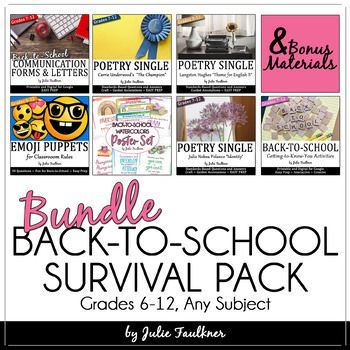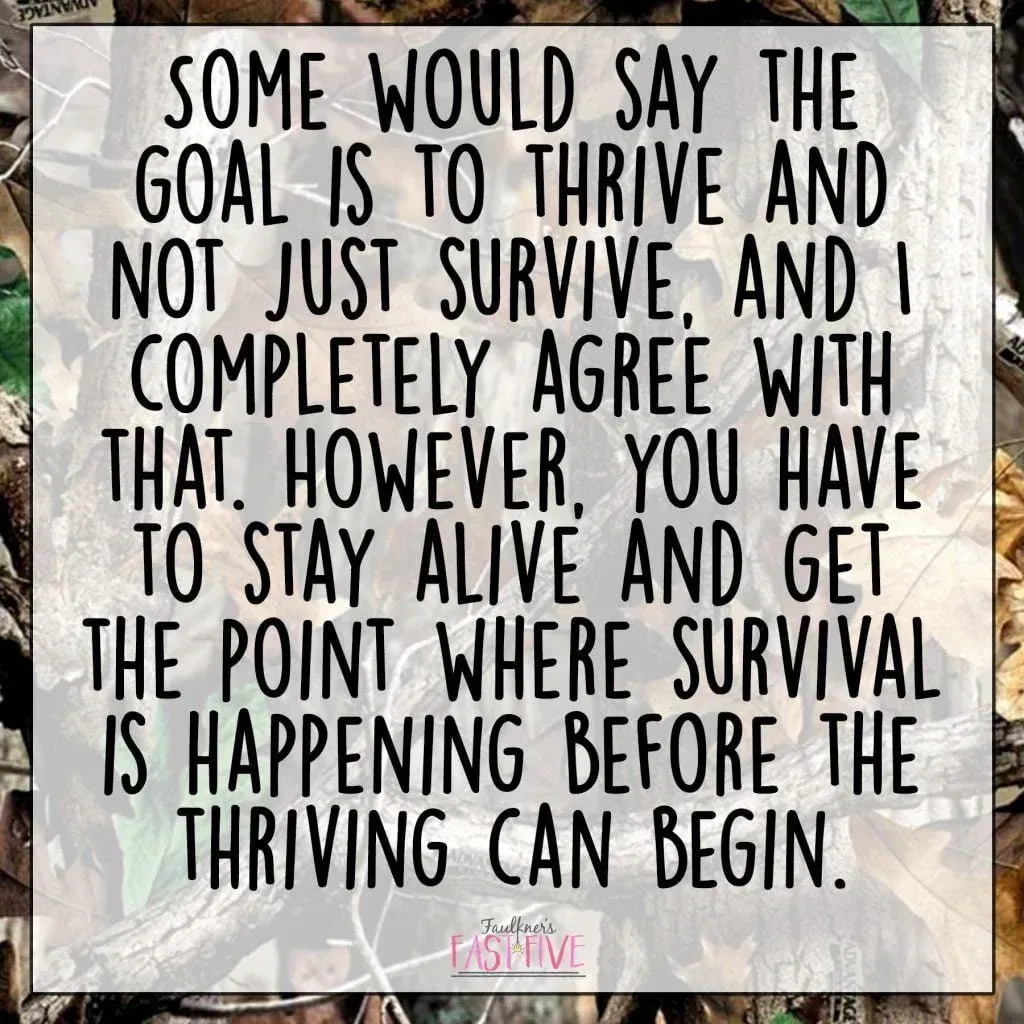Practical Tips For Surviving Back-To-School
Are you a new teacher? Or a seasoned teacher who has started to dread heading back-to-school? We’ve all been there! However, the start of the school year doesn’t have to feel like a survival of the fittest game show! Here some tips that I’ve learned (from making plenty of mistakes) and tools that I’ve used that can make going to back-to-school much less stressful. Hopefully, these tips for surviving the back-to-school season will help you get your year off to a successful start.
1. PLAN TO COMMUNICATE WITH STUDENTS AND PARENTS
One of the biggest battles (especially at the secondary level) is making sure everyone is on the same page. It is important to get going with the communication early on so that it doesn’t escalate into a huge problem later on. If you struggle to get forms in or homework signed all year, you will never feel caught up. I teach secondary English, and parents never seem to know when a project is due or when a report card comes out, and teenagers like to keep it that way. However, I’ve found that my students can’t resist social media and their electronic devices. There are several options available. Remind is a texting app/website that sends text messages to anyone signed up for your list. I like it because it doesn’t use my cell phone number, I can schedule the messages for right after school, and parents and students can sign up. One thing I found that works for me with different periods and assignments due, etc. is to set up different classes. Then I can do one big blast or just pick certain classes. Students have to sign up using a code the website generates, and parents see the code on the syllabus I send home. The second tool I’ve used is dialmycalls.com. There is a free trial of this one available. Also, Google Classroom will send notes to parents weekly too if you set that up. These methods are easily documented and quick.
I also love to get information from my students and parents on the first day with an informational collection sheet. It is designed to interview BOTH the student and guardian. I really do enjoy reading the answers from both points of view. You can get the editable printable and digital form in my Back to School Survival Pack!

2. BUILD IN BREAKS FOR YOURSELF
I discovered this trick several years ago, while in survival — not thriving — mode. Every week, usually Fridays, I plan an activity that takes the pressure off of me, but still keeps the students engaged in a purposeful and meaningful way. For example, all week long I am lecturing on skills, monitoring assessments, engaging discussions, facilitating small groups, and being full-on up and going for 90 minutes straight. The kids are working, too, but I am doing a lot as well. Typically, on Fridays I plan a sneaky little breather for myself. Maybe the kids do a hands-on activity to reinforce what we did that week, and I just mingle and offer encouragement. Maybe the kids take a quiz or spend the period doing a quick writing assignment. One of my favorite things to do each week on Friday is my weekly reflection and book club meetings. The weekly reflection takes about 15 minutes, but it is the best 15 minutes! The kids are working, thinking, and talking while I am just sitting back listening, learning, and loving it! Find it in my back to school survival kit. Read more about my book club meetings here.
3. GET TO KNOW YOUR STUDENTS IN A MEANINGFUL WAY
It’s really hard working with people you don’t really know. The more you know someone the better the relationship is and the time you spend together is more enjoyable. I believe it is important to do some getting-to-know you activities at the beginning of the year, but not the kind that you forget and throw away after a few weeks. And certainly not ones that are just busy work. I only have so much time with my students to get everything covered, so every minute counts. I used to be hesitant to say anything about myself at all, but I’ve come to realize that it does help to do some honest sharing with students. Otherwise, all they ever know about you is what you wear each day and everything else that they imagine to be true.
Also whatever activity you choose needs to have some sort of a diagnostic component. For me as an English teacher, it is easy to fall back on a quick writing assignment or short project. I can share my own response to the writing or project, so they learn about me. If you are teaching math, think about what students could accomplish or do to show their math abilities and have a fun product that shows you something about them. I love what Solutions for Math did with THIS back-to-school Figure Me Out getting-to-know you activity for high school math students. They will be practicing equations while getting to know their teacher and peers! General tasks for the first days work very well if you have very short periods or need something quick. My back to school survival kit has several of those.
Once you done introductions and icebreakers, direct your attention to something a little more standards-driven and subject-specific. Below is one of my favorite projects to do. It was featured in the History Channel‘s teacher magazine, and it’s free! It is really perfect for English, history, or digital classes.
4. CLASSROOM ROUTINES
Chaos is overwhelming and anxiety inducing. It’s frustrating for teachers and students. Over time that starts to affect your health and emotions. Decide what routines you need in your class to make each period run smoothly, start them from day one, and practice them with students. Each day, my students come into the room and do a few things BEFORE the bell rings:
- Put their bags and purses on the cabinet near the door. They get out what they need and leave the bulk behind.
- Check the “Take One Table” for any worksheets they need to pick up for the day. More on the “Take One Table” at this video on Instagram.
- Students sign themselves in for attendance. I do that with a Google Form that I create a QR code for. Students sign in with that code on my splash screen every day. Click over to my Instagram for an explanation. Highlight linked here. (It’s after the Macbeth bulletin board.)
- Get started on the bell ringer. You can read more about my bell ringers here. I love to give students responsibility before the tardy bell rings because it frees me up to greet them, eat a snack, and get anything else ready. It also allows us to waste zero time at the beginning of the period.
Some other routines I swear by are turning in papers into one place every time, labeling papers a certain way, and moving in and out of groups quickly and quietly. All these are things that I teach students during the first week of school – week, not day. It’s impossible to teach them all on one day and expect students to remember. Just add in and teach the different routines once they come up. Also, to be sure you’ve covered them all, make a list and chart out in your lesson plans what day you’ll be doing them. You can see more of my journey-themed classroom at this post.
5. GO HOME ON TIME
…or as close to on-time as possible. Nothing will drain you faster than staying over every single day; teachers are notorious for doing this. We work and work and lose track of time. Then we work when we get home and on weekends. I am very guilty of this myself. I feel like I can’t get it all done or am not being a good teacher if I don’t. But by Christmas I have worn myself out so much that I am either in the hospital or sick on the couch all break – true story. Our last bell rings at 3:00pm. I have been working on this the past few years. If I stay late, it is only one (or maybe two) days a week. …or as close to on-time as possible.
What’s helped me improve is having a system and staying organized. For example, at the beginning of my plan period, I run all my errands –copies, paperwork, bathroom, etc. Then I come back to my room and check my email. After that I grade any papers or create any worksheets, lessons, etc. If I work through this system and don’t backtrack or get distracted, I can usually get things done. (We’re pretending here no one knocks on my doors, calls me on the intercom, wants a meeting, or stops me in the hall.) Also, I have 75-minute periods. Nonetheless, having the system works for the most part and helps me feel accomplished. I also plan out which days I work on things such as on Thursday I plan for next week so Friday I can turn in my lesson plans. On Friday, I do a quick swipe through my room to clean and put things away. I talk about using your planning time more here in this video on my Facebook page.

Implementing the steps and tips above really can ease the back-to-school stressors. Many of the tips can even be done prior to school starting without impeding too much on your summertime. Some would say the goal is to thrive and not just survive, and I completely agree with that. However, you have to stay alive and get the point where survival is happening before the thriving can begin.
Love this content?
Sign up for my email newsletter with more tips, ideas, success stories, and freebies!


















